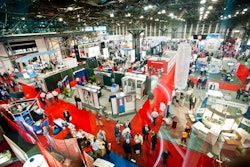
The counterfeit product industry is an exploding $700 billion criminal industry with little information or protection available to consumers. Counterfeit goods, mainly from China, have become as profitable for Asia's criminal gangs as illegal drug trafficking, says a United Nations report. However, counterfeiters continue to pump counterfeit auto parts, fashion accessories, heath care items, pet supplies, and sporting goods into a market already saturated with fake Rolex watches and designer handbags.
A new Web site, The Counterfeit Report now provides consumers a free and informative visual guide to avoiding counterfeit products, while aiding manufacturers in consumer education and brand protection. The Counterfeit Report™ Web site allows consumers a clear, informative, and visual product reference library to check and identify counterfeit products, medications, and pet supplies. Consumers can also report seeing or purchasing counterfeit products right on the Web site.
“The Counterfeit Report is actually showing the consumer the sophistication of counterfeiters and their ability to create visually identical counterfeit products and medication. If it's manufactured, it's probably counterfeited” says founder Craig Crosby.
The Counterfeit Report is the only Web site that provides manufacturers an immediate resource to list and update counterfeit product information in a central venue. This helps consumers instantly identify counterfeit or fake products before they buy, and expands consumer awareness of counterfeit products they would never suspect like the Gillette Razor Blades and Tide Detergent featured on the Web site. The anti-counterfeiting effort is more than protecting a trademark or brand; it is also protecting consumers from unsafe and potentially deadly products and medications.
Counterfeit statistics are staggering. More than 40% of online prescriptions are counterfeit, Amazon Marketplace was recently identified as a leader in the proliferation of counterfeit products, and the U.S. military is reporting a huge influx of counterfeit parts that are putting our troops at risk. The FAA estimates that over 500,000 counterfeit aircraft parts are installed in aircraft each year, with potentially catastrophic results.
Internet sites and online auction sites including Amazon Marketplace and eBay are swamped with real-looking counterfeit or "knock-off" merchandise, while Chinese Web sites openly and freely advertise bulk counterfeited national brands for sale. These Chinese products often make their way to secondary retailers, swap meets and Web sites whose sellers often promote them as "genuine" or "100% authentic," then disappear after the sale.
Counterfeiting even extends to wines. Counterfeit wines are so prevalent, that expensive wine bottles are now being smashed to prevent them from being refilled and re-sold to unsuspecting consumers.
The purchase of counterfeit products is supporting criminals who avoid paying taxes, cost U.S. businesses over $250 billion annually, and destroy an estimated 750,000 U.S. jobs. Illegal counterfeiting activity is reportedly more profitable than the international illicit drug trade, difficult to track, and widely un-punished.
While we all recognize the tough economic times, there is no reason for a consumer to get stung by poor quality, substandard, and unsafe counterfeit products and medications. Many counterfeit products are identified when they are returned to the manufacturer for warranty repairs, leaving the consumer out their investment and without the product. "It's the consumer who ultimately gets hurt. We're here simply because counterfeiting is wrong,” says Crosby.






















